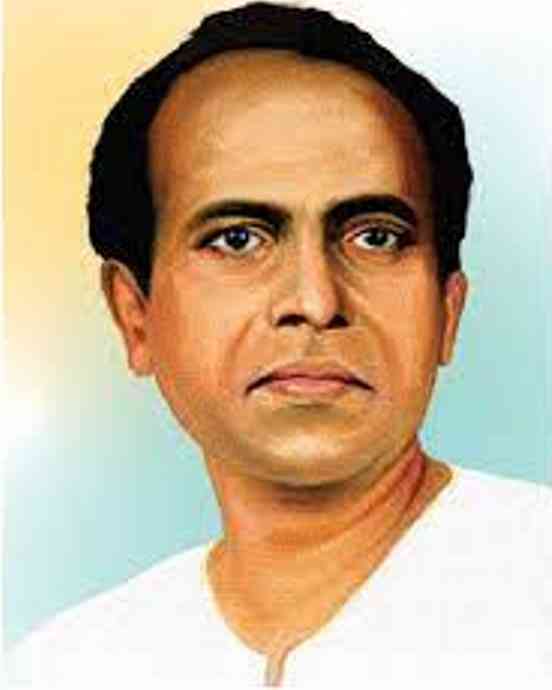
Annabhau Sathe (1 August 1920 - 18 July 1969) was an immensely admired dalit communist writer, performer who galvanised people’s struggles in Mumbai in the 1940s and 1950s. He was also a key cultural protagonist of the Samyukta Maharashtra Movement, the movement for a linguistic Marathi-speaking state which led to the emergence of Maharashtra and Gujarat as two separate states carved out of the erstwhile bilingual Bombay State. A folk play written by him during this movement Mumbai Konachi (Whose Mumbai) was staged on 2 October by IPTA before a packed audience. The play perhaps resonated even more in today's context of urban crisis and dispossession, and the precarious, insecure conditions of life of large sections of the urban poor and working people many of whom have no access to secure shelter and stable job or livelihood. A short review of the play by journalist and culture critic Vidyadhar Date.)
Seeing Annabhau Sathe's play on Mumbai’s working people’s struggles against capitalist domination, written in the 1950s, makes one realise that he in a way preceded eminent urban radical thinkers like David Harvey and Henri Lefebvre who have emphasised the concept of people’s right to the city, shape its economy, space and so on.
This consciousness in him was created out of a mass upsurge , big demonstrations and morchas were taken out in Maharashtra in protest against the decision to separate Mumbai from Maharashtra. Police firing took a toll of 107 protesters from different walks of life, it is in their memory that we have Hutatma Chowk at Flora Fountain.
The Samyukta Maharashtra movement was in good measure for merger of some border areas into Maharashtra but it was also rooted in the struggle against economic injustice, domination of the city by vested interests. Perhaps nowhere else in statehood movements was the working class so strongly involved in the struggle. The class element in Mumbai was very prominent with S.A. Dange, veteran communist leader, and other progressive leaders at the helm in Maharashtra.
The city is the most central site for capitalist accumulation and exploitation of workers. Mumbai’s capitalists wanted to have the cake and eat it too, get all the benefits of the infrastructure and not share the surplus wealth generated by workers with the rural population. The upper class in the elite South Mumbai area look down even upon the better off sections in other parts of Mumbai. So one can imagine their indifference, hostility to the rural masses.
The first performance of Mumbai Konachi? was staged by IPTA at a packed Ravindra Natya Mandir on October 2, Gandhi Jayanti day. It got a rousing welcome from the audience. Real solidarity between the actors and audience and all for a good cause. All seats were taken, some seniors like Kuldeep Singh, noted music director, did not seem to mind sitting on the steps. Also present were IPTA veterans, producer Masud Akhtar, Ramesh Talwar, Anjaan Srivastava. Sulabha Arya played the sootradhar. The set was designed by M.S. Sathyu and the play directed by veteran Shivdas Ghodke with so much passion and enthusiasm despite his illness.
The serious theme of the play, revolving around the conflict between capital and labour, the rich and the poor, was presented in a very lively manner with a lot of humour. There were no stereotypes. Even the exploiter Shetji, the businessman, was far from hackneyed. The performance began with Sathe’s famous lavani, the popular musical genre, depicting the inequality in Mumbai from Malabar hill to the working class areas. A large young and energetic cast did it in folk form with actors expressing so much with their bodies, adding so much to the written word.
There is now world wide recognition of people’s right to the city which is clear from so many charters and declarations. But the urban power elite does not recognise the enormous contribution of ordinary people and workers to the creation and maintenance of urban wealth. There are also indications that Mumbai may well be sought to be separated from Maharashtra. Governor Koshyari’s widely condemned statement is reflection of this anti-people bias. He had to apologise for his comment that only certain communities created wealth, hinting that the common people had no role in it. Annabhau Sathe showed how common people created wealth and urban infrastructure. Mumbai got its electricity at the expense of hundreds of peasants who lost their land for the Mulshi dam in the hinterland for a hydro electric project.
Annabhau’s vision was humanistic and universal. That is why he wrote a powada, a ballad, on the battle of Stalingrad against Hitler and the Spanish people’s struggle against fascism. It is in recognition of his contribution that recently a statue was installed in Moscow in his memory to mark his centenary.








